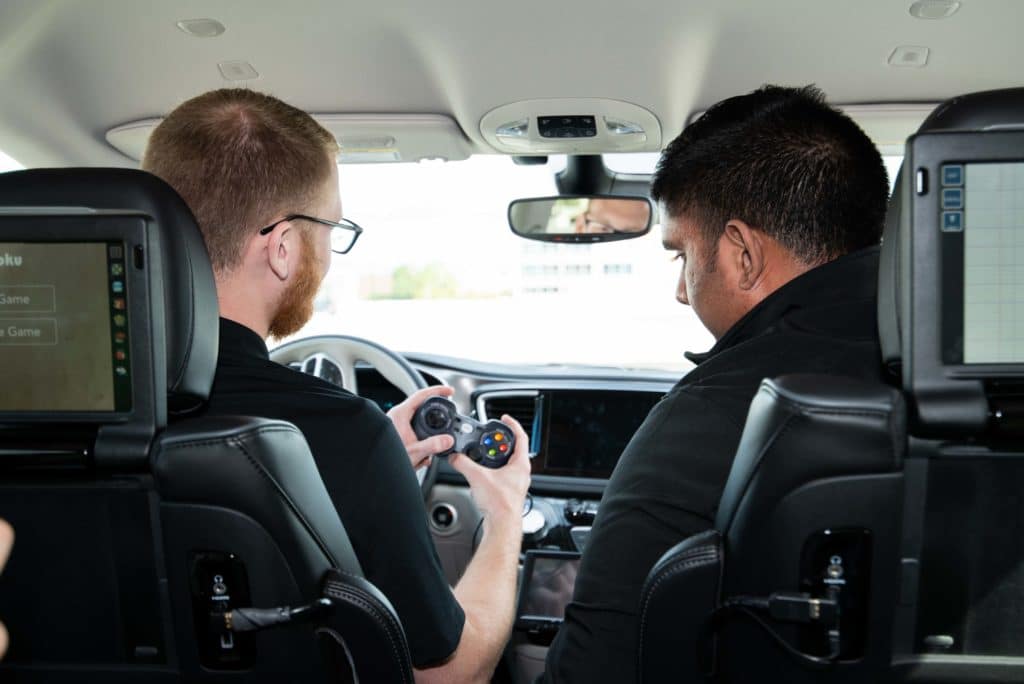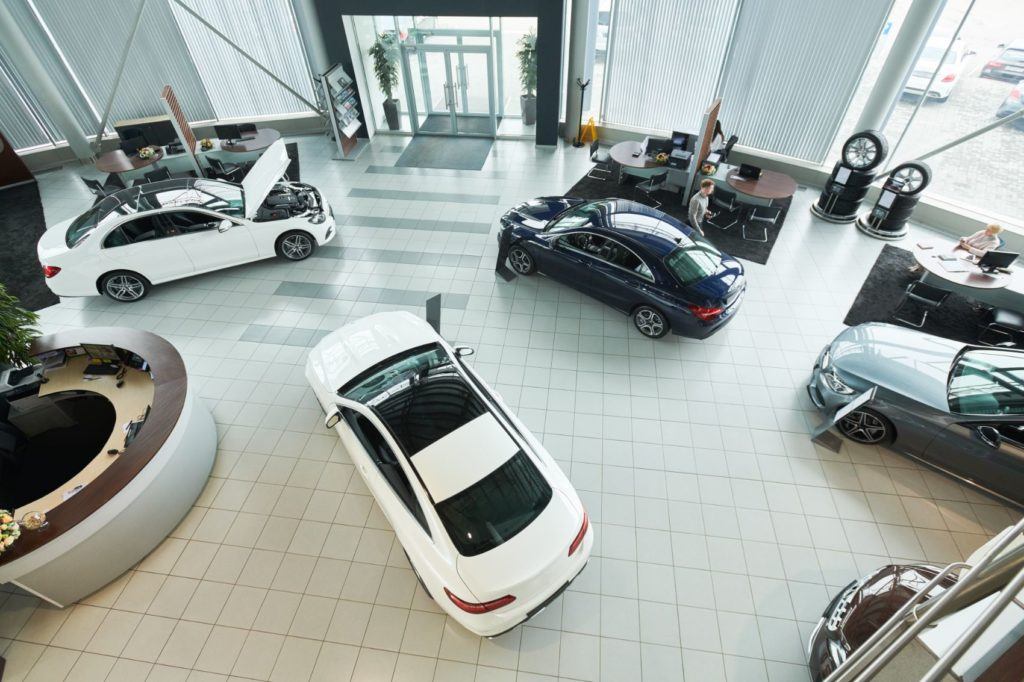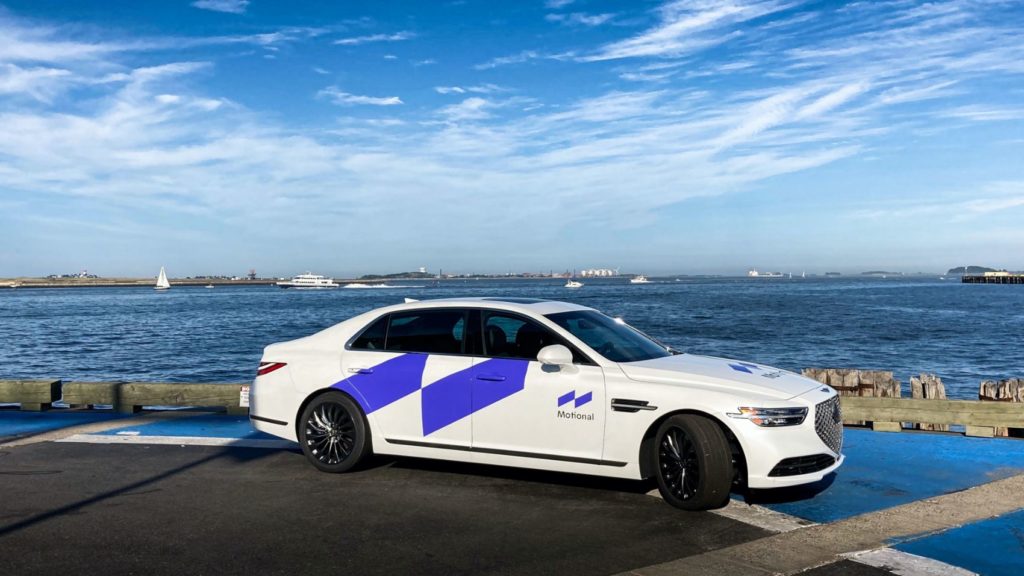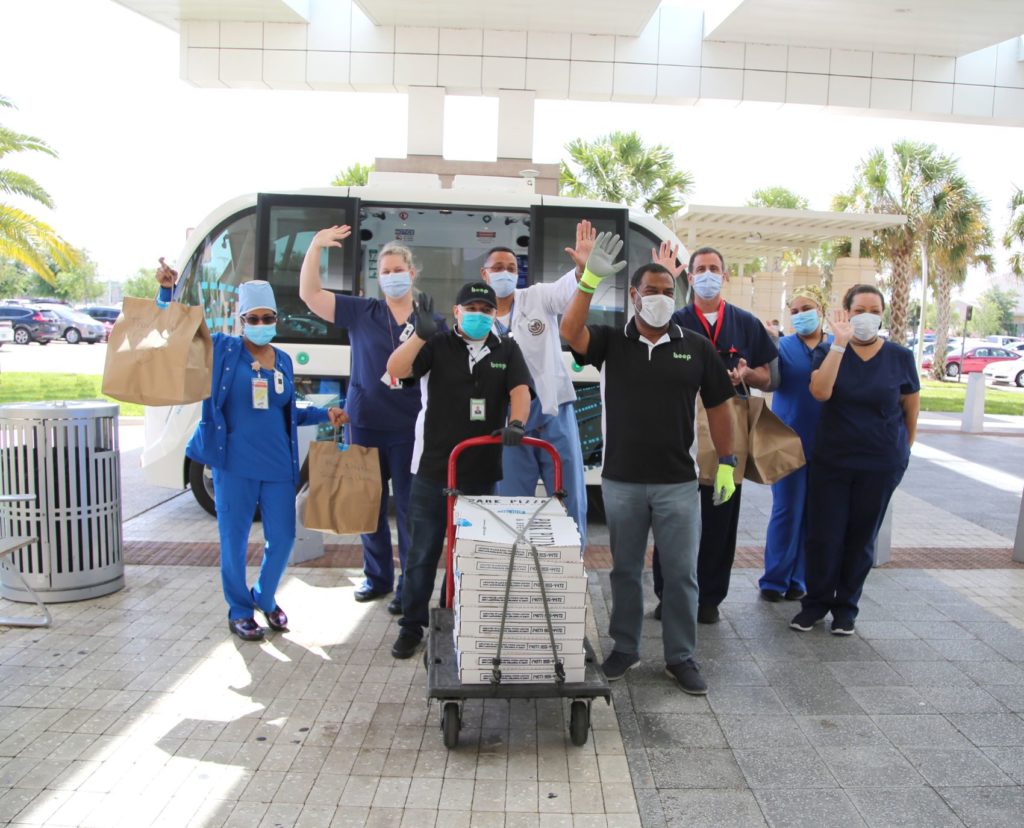One of the things we frequently talk about in the ADAS and autonomous driving community is how to help consumers embrace the technology. Consumer adoption is usually at the forefront of my mind when I see new ADAS demonstrations. When I attend conferences, like AutoSens, for example, to learn about the industry’s latest innovations, I ask myself how I would present what I am seeing to the everyday car buyer.
In my work with Automoblog, I interact with a different world when compared to AutoVision News. Some members of Automoblog’s core demographic tell me they have little to no interest in self-driving cars. It’s not that they are against autonomous cars per se, but more of the notion they would rather drive themselves (which in the United States, driving is still an integral part of our culture).
Such passion for driving – and passion for the automobile as a whole – mixes with uncertainty around the technology. These members of Automoblog’s core demographic also express their reservations about an autonomous car being genuinely safe or “foolproof,” considering all of the variables drivers encounter on the road. Again, it’s not that they are opposed to autonomous cars; autonomous cars are fine and dandy for someone else, but they are not “my cup of tea.”
Food for Thought
My wheels started turning when I read the Inagural Consumer Mobility Report from Motional. If I went back to these particular members of Automoblog’s core demographic and showed them a fully functioning and truly safe autonomous car, what might happen? Would they think differently? And would they consider taking a ride in one?
“The report made clear that safety is how we’ll earn the trust of consumers,” explained Laura Major, Chief Technology Officer, Motional. “Nearly two-thirds of Americans (65 percent) say safety is the most important factor when considering a self-driving vehicle.”
Motional’s Consumer Mobility Report does show a silver lining when it comes to safety and consumer adoption. When safety objections are addressed, consumers are more receptive to autonomous cars. Assuming an autonomous car could operate safely, and those parameters were clearly defined, and firmly in place, respondents began to see the potential benefits. In that scenario, 36 percent cite safety as the top reason for being interested in an autonomous car in the first place. Another 15 percent noted the ability to multi-task while driving, while 14 percent believed autonomous vehicles could help somebody who was impaired.
Along with safety, there are several other elements about Motional’s Consumer Mobility Report that stand out. Some we are familiar with as they echo similar sentiments from other surveys and studies in the past. Some of the realizations are new as we continue to navigate a global pandemic. I will do my level best to break down these elements of the Inagural Consumer Mobility Report from Motional.

Knowledge Breeds Excitement
Like safety, knowledge is another critical factor when it comes to consumer trust and adoption. Motional’s Consumer Mobility Report finds those who identify as “extremely knowledgeable” about driverless vehicles are more inclined to say they’re excited about them versus those who identify as “less knowledgeable.” For example, just three percent of respondents who cited themselves as “less knowledgeable” would regularly use a driverless vehicle. By contrast, 66 percent of those who considered themselves “extremely knowledgeable” also said they would regularly utilize an autonomous car.
“The more people say they know about autonomous vehicles, the more they say they are willing to trust them, and the more likely they are to believe safe AVs will make it to American roads,” explained Ed Niedermeyer, Director of Communications for the Partners for Automated Vehicle Education (PAVE). “This even extends to experience with driver assistance automation: people who own cars with driver assistance features are more likely to trust autonomous vehicles.”
However, only 13 percent identified as being “extremely knowledgeable” about autonomous vehicles in Motional’s Consumer Mobility Report. Nearly 45 percent, by contrast, believe there is no difference between fully autonomous cars and current ADAS technology. Another 39 percent believe self-parking cars and autonomous vehicles are one and the same.
These findings on customer confusion from Motional reinforce the conclusions of another study conducted earlier this year by PAVE. In the PAVE study, nearly 40 percent say they feel confused by the different names for ADAS systems. Like this Motional study, PAVE also found a link between knowledge and excitement. The higher a respondent rated their knowledge of autonomous vehicles, the more likely they were to embrace self-driving technology. However, like this Motional study, few respondents in PAVE’s survey rated themselves as highly knowledgeable on the subject of autonomous vehicles.
“Autonomous drive technology is extremely complex and consists of systems that are made up of components that are each at the cutting edge of their particular technology,” Niedermeyer explained. “That makes it a fundamentally difficult topic to educate the general public about. Just like the companies developing the technology, educators in this space are having to experiment with lots of different educational techniques and approaches.”
“Seeing is believing,” Major added. “But few people have experienced this technology.”

Closing The Gaps
Industry experts and the greater ADAS community are working to close these knowledge gaps for consumers. For example, SAE International, AAA, Consumer Reports, J.D. Power, and the National Safety Council have recommended standardized naming guidelines for ADAS technology. The report, aptly titled Clearing The Confusion (PDF), is not meant to replace an automaker’s proprietary names for their ADAS packages. Instead, it provides additional clarity for consumers on how those systems function.
“With advanced safety technologies being added to new vehicles every year, we recognize that it’s important that consumers understand the technologies they are using, and common descriptions can help,” explained Chad Zagorski, Chair of the SAE International Active Safety Systems Standards Committee.
“Consumer confusion is a serious issue,” added Maureen Vogel, Director of Communications for the National Safety Council. “We know that our cars cannot operate safely without us, so it is important to avoid certain terminology – autopilot, for example – that could lead drivers to abdicate responsibility and trust the machine to operate independently of the driver.”
The National Safety Council and The University of Iowa maintain the consumer-focused website MyCarDoesWhat.org. The website is part of a national campaign to educate drivers on new and emerging safety technologies. Similarly, PAVE maintains an extensive database of resources for the general public. “The levels of education and acceptance are both quite low in the U.S., which means PAVE has its work cut out for it,” Niedermeyer said.

COVID-19 Changes Public Perception
Given the timing of Motional’s Inagural Consumer Mobility Report, it identifies some critical trends in personal mobility and what the future may hold. In Motional’s study, nearly one in five are more interested in autonomous cars now than before the pandemic. Over 80 percent say access to clean and safe transportation is now a public health concern. Another 70 percent say the risk of infection in public places will change their decisions regarding personal mobility.
“The study underscored how COVID-19 has changed how Americans intend to use transportation in the future and their interest in safe alternatives to traditional modes of transportation,” Major said. “These findings didn’t surprise us as they’re reflective of conversations we’ve been having internally and with our partners about the need to address public mobility challenges and how self-driving vehicles can provide a safe, reliable option when person-to-person contagion is a serious concern.”
“We’ve seen multiple surveys now that suggest the COVID-19 pandemic has shifted perceptions of autonomous vehicles, including this Motional survey and an earlier Consumer Technology Association survey,” Niedermeyer added. “The pandemic has also changed consumption, travel, and movement patterns that may well have people rethinking their lifestyles in a way that makes autonomous vehicles more appealing.”

Public Transit & Personal Mobility
Buses, light rail, and other public transport entities have been hit hard in the era of COVID-19. A recent whitepaper from Minnesota’s VSI Labs notes that public transportation is down 75 percent compared to normal. The Chicago Tribune reports that CTA ridership has dropped amid the COVID-19 pandemic. Washington D.C. and New York City have seen similar drops as well in public transportation. In Detroit, the home of AutoVision News, the QLINE, which runs a 6.6-mile loop and stops at 12 locations on Woodward Avenue, is suspended until further notice.
“People are less willing to share a ride unless they know it’s clean or uncrowded, something our current system isn’t set up for, at least not easily today,” said Tammy Meehan, Founder and Chief Catalyst of The PLUM Catalyst LLC. “We now recognize even more than ever that diseases can be spread when people are in close proximity and shared surfaces are not cleaned regularly.”
Even with extensive cleaning and social distancing protocols, public transportation may still struggle to provide riders with peace of mind. In the era of COVID-19, it’s hard to imagine things like public transportation ever going “back to normal.” If public transportation is to survive this pandemic, its landscape is sure to look different in time. In Motional’s Consumer Mobility Report, nearly 70 percent said that COVID-19 has changed how future cities should be planned and developed.
“COVID-19 opened Americans’ eyes to a number of imperfections in how cities and transportation have been designed for decades,” Meehan explained. “Previously the norm of city experiences, greasy crowded rides on public transportation or crowded waiting areas in hubs, almost overnight, was no longer tolerated.”
Some experts surmise it might take a year or more before we can fully resume some everyday activities, like taking the subway or riding the bus. Those who take public transportation should practice social distancing and limit their time touching frequently-used surfaces, according to the most recent guidelines by the Centers for Disease Control and Prevention. When taking all of this into consideration, personal vehicle ownership (autonomous or otherwise) is now much more attractive for the general public.
“Consumers are seeking socially-distanced ways to conduct their daily lives, and transportation is a key part of this consideration,” Major explained. “This means people are walking or biking more or limiting their mobility, but that’s not always feasible for where they need or want to go. As a result, driverless vehicles, and even autonomous technology more broadly, may interest more and more consumers as we adapt.”

Small But Meaningful
Niedermeyer believes the more people see autonomous technology making a difference in the real world, the better. “Thus far, most people have only seen AVs in promotional videos, basic demos and other somewhat artificial contexts, so this presents a practical side of the technology the public hasn’t been exposed to much,” he said.
Such practical application of autonomous technology may encourage eventual consumer adoption. COVID-19 has presented some viable use cases for autonomy, including the contactless delivery of medical supplies for frontline healthcare workers. Earlier this year, General Motors and Cruise and Toyota and Pony.ai mobilized their fleets for contactless food delivery in California.
“Sectors like autonomous delivery on-demand or contactless delivery solutions are getting significant investment right now, especially with the current COVID world we live in,” Meehan said. “Cities are working on figuring out how to accommodate their infrastructure for these delivery robots for future mass deployment.”
Seeing autonomous applications in this context helps minimize the “lightning-fast jolt” consumers many envision with the technology. In other words, one day they are driving their car and the next day they are not.
Graphically speaking, an autonomous delivery shuttle is a more of a logarithmic visual (ln(x)) for consumers versus an exponential one (e^x). The automated delivery shuttle canvassing their neighborhood represents a gradual ascension instead of a sharp vertical climb into an autonomy. Such things are arguably more digestible for the average consumer. It gives them the necessary time to warm up to the idea of having an autonomous car in their driveway.
“The ability to hail a ride or order food delivery without being exposed to the virus now holds an appeal that wasn’t as clear before the pandemic,” Niedermeyer continued. “It seems that as people see AVs actually out in the real world, doing real good and bringing new capabilities to the table, they seem more ‘real’ and their positive potential becomes more comprehensible.”

Navigating a New World
One of the most critical elements of Motional’s Consumer Mobility Report is how 62 percent believe that self-driving vehicles are the way of the future. Perhaps, as an industry, the best follow up question to ask that 62 percent is how excited they are about it. Someone may readily acknowledge an autonomous future, but at the same time, not be all that jazzed about it. My late father, an amateur musician in the 1970s and 80s, often surmised that DJs with an extensive compact disc collection would replace live bands at clubs.
As the 90s progressed, he gigged less and less. He acknowledged it and had a healthy collection of compact discs himself, although it was easy to tell he missed playing live. Sometimes, on a Saturday afternoon, he would plug his pearl white Fender Stratocaster into a Marshall MS-2 mini amplifier and jam. Sometimes he would switch things up and pull out his Hamer Sunburst. Either way, my father loved to play, whether to a room full of people or just me sitting on the couch.
I see this same mentality in the core of our Automoblog audience I mentioned earlier. I can see some acknowledging that autonomous cars are the future (and they will even agree with all of the benefits of autonomy). Not all of them will fight it, but that doesn’t exactly mean they will embrace it either. Similar to my father’s guitar, it’s the core members of Automoblog’s audience who look at their car and see a great many memories. As my father would jam on the weekends, even if he didn’t have a gig, the core of Automoblog’s audience will take a Sunday drive even if they have nowhere to go.
Is it possible that autonomous cars and human-driven ones can exist in the same universe? Perhaps. But I honestly don’t know the answer to that.
I do know that we live in a different world today. Maybe what we are experiencing now will catalyze the changes we want to see even beyond consumer adoption, but changes that usher in a better world for future generations. This is my hope. As the Motional study confirms, the links between autonomous cars and a safer, more sustainable future are becoming apparent. The challenge now is getting everybody on the same page.
“When life unfolds in comfortable, familiar patterns, it can be hard to imagine or embrace fundamental changes. By the same token, when an event like the COVID-19 pandemic upends the usual patterns of daily life it becomes easier to rethink decisions that we might never have questioned before,” Niedermeyer said. “These moments are always interesting for emerging technologies like driving automation, as they are an opportunity to step out of choices we don’t even realize we are making, consider their impacts and costs, and imagine how different ways of doing things might create a better future.”


